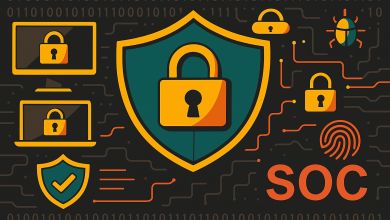
In today’s world, AI is more than a buzzword. It has been integrated into nearly every industry, changing the way businesses operate, how we as individuals interact with technology and how we interact with each other. While there are significant benefits of this recent AI adoption – particularly when it comes to efficiency and innovation – there is also a dark side.
Bad actors have been and will continue to leverage powerful AI tools to execute sophisticated scams that trick individuals and damage businesses. According to a recent McKinsey article, phishing, business email compromise, and stolen credentials are leading to breaches that are costing organizations an average of $5 million per successful incident. AI has added a new level of danger to traditional attacks, making them harder to detect using traditional means. In other words, as AI evolves, cybersecurity risks become more intense and detection becomes more difficult.
However, the same technology that is driving these attacks is also critical for fighting them. In this post, we will explore how AI is changing the cybersecurity and risk management space, highlighting recent developments, applications and innovations for the future.
The Rise of AI and Digital Fraud
As threats in cybersecurity continue to rise, businesses are increasingly vulnerable. For example, as the capabilities of Generative AI continue to advance, it is expected that bad actors will leverage the advancements and develop more sophisticated and scalable fraud schemes. We are already seeing this take place – there are scam schools all over the web and Fraud as a Service (FaaS), where fraudsters make money teaching people how to conduct scams, has become widely available on messaging and social media platforms.
Fraudsters are usually the first to take advantage of new technology as they will do anything to make their “job” easier and have no constraints. That is why business leaders need to quickly and effectively integrate technology to counter these evolving threats.
AI and Real-Time Threat Detection and Response
By creating a cost-efficient, scalable and automated process that identifies fraudulent activity, organizations such as payment providers, financial institutions, and online marketplaces can better scale fraud mitigation efforts. This process should be comparable to that of human analysts to effectively manage fraud prevention efforts. With scalable and automated processes, organizations can achieve comprehensive coverage of their entire portfolio, respond quickly to emerging threats, and identify risks at the onboarding stages, which supports the continuous growth of their business while protecting the consumer.
In recent years, some organizations have leveraged AI to successfully detect fraudulent activity. For example, Generative AI models can accurately identify fraudulent activity of merchants and sellers based on their content, even before making transactions. Methods have been developed to efficiently maximize the performance of the Generative AI models – particularly, refining the Out-Of-The-Box (OOTB) models to accurately capture the subtle nuances of payment risk and to implement a cascade of models to obtain a cost-efficient automated risk analysis. Implementing AI to identify risks before they happen is the key to protecting businesses.
The rapid evolution of the cybersecurity space presents a dynamic environment ripe for innovation. As discussed, there will likely be a continuous advancement in both fraudulent tactics and defensive strategies, driven by sophisticated applications of AI. Consequently, there will also likely be significant progress in real-time fraud mitigation, anomaly detection, behavioral pattern analysis, and the identification of deepfakes and account compromises, alongside the automation of regulatory compliance. Unlike traditional fraud prevention methods, AI-driven solutions have the potential to rapidly identify and eliminate illicit products with increased speed and accuracy.
Looking Ahead: The Future of AI in Risk Management and Cybersecurity
Despite the threats and dangers brought on by AI, the technology is helping organizations fight fraudsters and cybercriminals like never before, offering solutions that are faster, more accurate, and more scalable than traditional methods. Advancements in AI have allowed business leaders to implement real-time fraud detection, identify emerging threats, and manage risk in ways previously unimaginable. Using AI to detect and respond to threats quickly and efficiently is crucial to ensure that organizations can protect their assets and their customers, allowing them to grow and thrive in a fast-paced and complex landscape.
AI in cybersecurity has created new opportunities and challenges for business leaders around the world, but it has also emphasized the need for strategic integration of AI-driven solutions to stay ahead of the curve and protect themselves from threats. It is not worth waiting for an attack to make the move – those who invest in AI early will be the ones who successfully combat cybercrime in the future.




